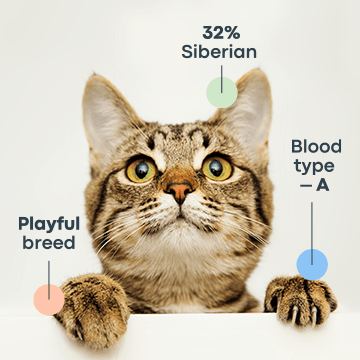Foxes are unique and intriguing animals. They are sly and quick like cats. At the same time, they bark and howl like dogs. Is it possible for foxes to be fully domesticated and kept as pets? Before making a decision, know more about them first.
Canine or Feline?
Who is the close relative of foxes? They are medium-sized creatures with bushy tails and long fur. These species are under the family of Canidae. Therefore, scientifically these narrow snout and pointy ear animal is part of the canines. They are related to the best friend of man, the dog. Aside from dogs, wolves are also their close cousins.
Cats are under the family of Felidae. As felines, they are related to tigers, leopards, lynxes, and lions. They are carnivorous, agile, flexible, and solitary. They have impressive body coordination. Simple activities like walking look elegant when they do it. Like dogs, cats are domesticated and can be wonderful pets. They also have a variety of breeds that vary in size and appearance.
What do foxes have in common with dogs?
Dogs and foxes share similar behaviors. First, the two species use barking as means of communication. Second, they also howl to express themselves. They are also territorial. Another common thing about them is their keen sense of smell. This trait makes them effective hunters. No prey can escape whenever foxes and dogs are tracking them.
Appearance and behavior similarities:
Dogs and foxes have similarities in appearance. They both have snouts that support their sense of smell. These creatures have big ears that help them to hear well. They both use their long tails to communicate by wagging them. This action could mean a lot of things. They might be asking for food, feeling happy, or excited.
The two animals are omnivores. They both need to eat meat and plant-based food to be healthy. These creatures are also affectionate to their young. They take care of them very well. As parents, dogs, and foxes provide food and all other needs of their pups. The offspring's nurturing is until they can take care of themselves.
Appearance and behavior distinctions:
Looking closely, even if dogs and foxes are related, there are differences too. The fox is smaller in size compared to most hunting dogs. When foxes bark, their sound is like shrieking. It is not deep and powerful like a dog. Even if they both have big ears, the fox only has a pointed appearance. Dogs can either have droopy, soft-cornered, or pointy ears. In terms of weight, on average, the fox is lighter. Foxes have a lower lifespan, whether in the wild or captivity.
Unlike their sociable cousins, foxes would prefer to be on their lonesome. They are shy and would often hide. Foxes are also less loud and not playful as dogs. They are nocturnal creatures compared to domesticated dogs that follow the time rhythm of their owner. The fox is also not easy to train like dogs. There are more free-spirited due to their inclination to the wild.
What do foxes have in common with cats?
Foxes are often mistaken to be related to cats because they have many things in common. First, both creatures can climb trees with ease. Second, the two carry a sense of elegance whenever they walk. These animals also have the same hunting technique. Their method is known as stalk, run, and pounce. It is hard for prey to escape when these patient hunters have their eyes on them. Once caught, they subdue them with their sharp claws and teeth.
Appearance and behavior similarities:
Observing the faces of cats and foxes, they have prominent whiskers. Dogs also have these, but it appears subtle. This body part aids in navigation and provides freedom of movement. Another similar feature is their eyes. Cats and foxes both have split pupils instead of round ones. These two creatures in adulthood have almost the same size and weight.
They also have the same elegant posture when running or walking. Watching them stretch is mesmerizing since their flexibility is good. These two species are efficient climbers and jumpers. Using their retractable claws, they can climb fences and trees. It is a plus factor when they want to escape threats. It is a very creative and quick response to defend themselves without fighting.
Appearance and behavior distinctions
The two species both eat meat. But cats are pure carnivores, while wild foxes are omnivores. When foxes do not get enough nutrition, they can go blind. So keeping them on a meat-only diet is a big no. Domesticated felines love to nap all day, but they are not necessarily nocturnal like foxes. Cats are classified as crepuscular since they are active at dusk and dawn. However, it does not mean they are actively running and roaming all night.
Cats love to groom themselves. They are tidy and do not smell. Unfortunately, foxes are not as clean. They also have a smell that is not removable. The reason for the foul scent is their natural body defense mechanism. Like skunks, foxes have glands that secrete an unpleasant odor. And since the fox is not trainable, keeping them could be messy. They are not ideal indoor pets like the well-behaved graceful feline.
Will foxes as pets be more like dogs or cats?
Foxes as pets would require open outdoor space. In terms of nutritional needs, they will be like dogs. However, when it comes to demeanor, they will be cats. A fox would prefer to live independently. When raised domestically, it can show attachment to its owner, but unlike cats and dogs, they will most likely not want to cuddle. So if you are looking for pets that are affectionate and good companions, the fox is not a good idea. These creatures prefer the freedom of their natural wild habitat.
Summary
The fox is a canine who is closely related to dogs. They may have similarities with cats but are limited to certain behaviors. Overall, foxes are unique beings and have a beauty distinctly theirs.




